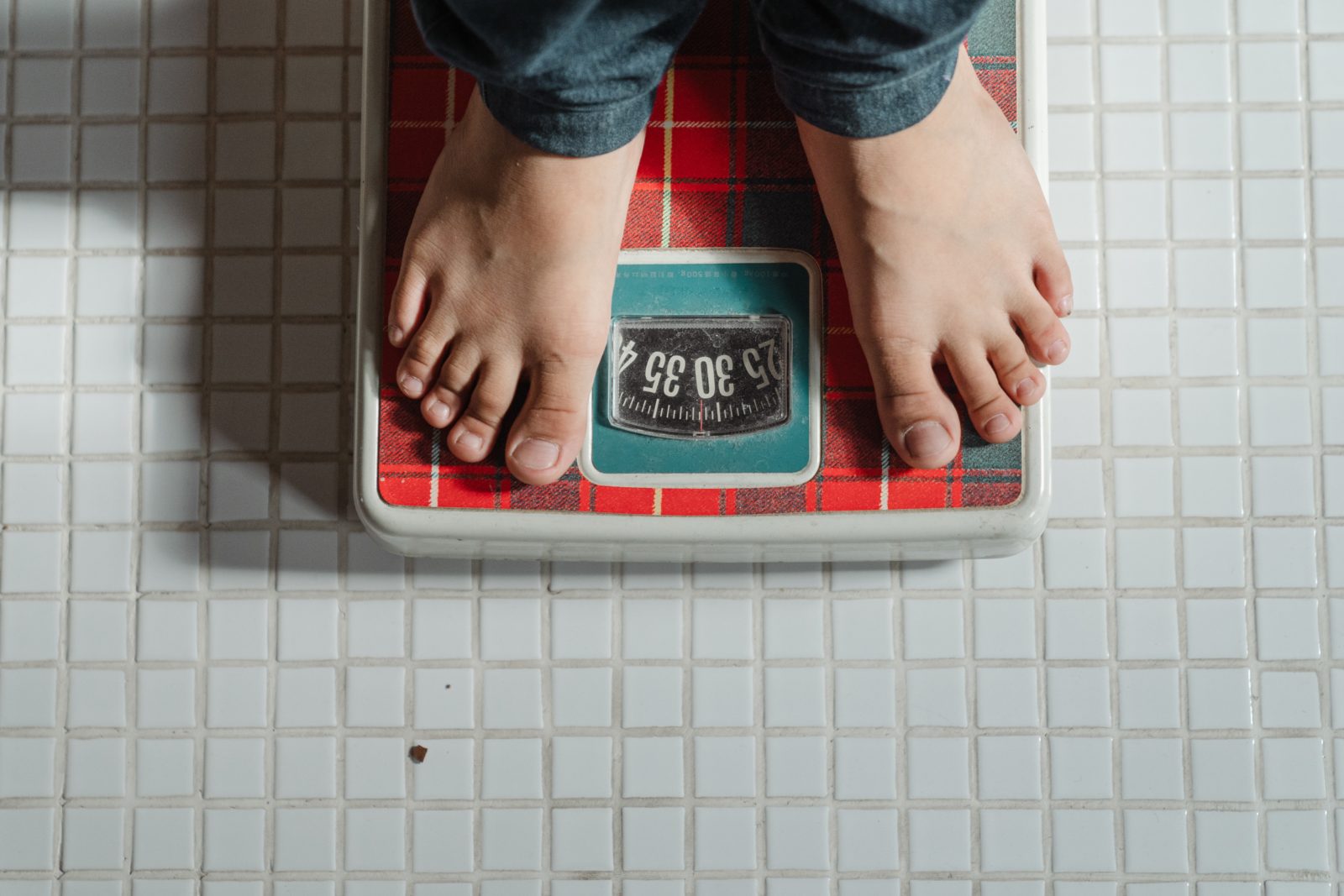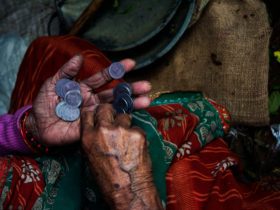In the Czech Republic, 5167 people were treated for eating disorders in clinics last year. It is an increase of about 15 percent in ten years. The most significant increase was among adolescents aged 15 to 17. Last year, 1,093 were treated, 89 percent more than a decade ago. The number of children under 14 with eating disorders also increased by more than half. Women and girls made up the majority of patients last year, 87 percent. This is according to data provided by the Institute of Health Information and Statistics (IHIS).
“The statistics show a significant gradual increase throughout the last decade. In the period of the covid epidemic in clinical practice, we saw a considerable increase in requests for treatment, ” Hana Papežová, the head of the Centre for the Treatment of Eating Disorders at the Psychiatric Clinic of the 1st Medical Faculty of Charles University and General University Hospital in Prague, stated.
Since 2015, the number of new cases has been rising from 2,140 to 2,450. Last year, there were 2,323 new patients, about 40 fewer than year-on-year. But some pediatricians talk about seeing children with eating disorders in their offices more often during the current covid epidemic. The capacity of specialized facilities for these patients was reduced during the covid outbreak, according to Papežová.
As a result of social isolation, young people spent a lot of time on social media during the epidemic. But some networks are dangerous and often openly pro-anorexia, according to Papežová. Apps that track physical activity can also be risky. Teenagers can set unhealthy low-calorie goals or high athletic performance goals, according to the doctor.
“Social isolation during the epidemic contributed significantly to the use of these risky new technologies,” Papežová said. The epidemic was also tricky for existing patients, according to Papežová, as they became more aware of the attention paid to their outward appearance during online sessions.
Nearly 38 percent of patients experienced a worsening of their eating disorder and an increase in other symptoms, mainly self-harm, according to the study. According to international data, about 70 percent of women with anorexia and 60 percent of women with bulimia or other forms of eating disorders recover entirely.
Of the 2,323 new cases last year, 1,007 were due to anorexia, often associated with an unhealthy obsession with healthy eating, known as orthorexia. Last year, 2,327 people were treated for anorexia, a number that has risen by more than a third in a decade. Orthorexia is now on the rise, according to Papežová, although hidden psychogenic overeating and other atypical forms of eating disorders are most common in the general population.










It’s actually very complicated in this active life to listen news on Television, so I just use the web for that
reason, and obtain the hottest information.
You ought to take part in a contest for one of the greatest sites on the web. I am going to recommend this web site!
Hello, I enjoy reading through your article post.
I like to write a little comment to support you.
Write more, thats all I have to say. Literally, it
seems as though you relied on the video to make your point.
You definitely know what youre talking about, why throw away
your intelligence on just posting videos to your blog when you could be giving us something informative to read?
Your style is so unique compared to other people I’ve read stuff from. Thank you for posting when you’ve got the opportunity, Guess I’ll just bookmark this page.
One of the most popular live chat sites online. A selection of chat rooms including chat, singles chat, cam chat
Hello, I log on to your blog on a regular basis. Your story-telling
style is witty, keep it up!
If you would like to improve your experience only keep visiting this site and
be updated with the most up-to-date gossip posted here.
It’s perfect time to make a few plans for the longer term and it
is time to be happy. I’ve read this post and if I could I desire
to recommend you some attention-grabbing things or advice.
Maybe you could write subsequent articles relating to this
article. I want to learn more things approximately it!
whoah this weblog is great i love reading your posts. Keep up
the good work! You already know, a lot of persons are
hunting round for this information, you could aid them greatly.
I am not sure where you’re getting your info, but great topic.
I needs to spend some time learning more or understanding more.
Thanks for wonderful information I was looking
for this info for my mission.
Sweet blog! I found it while browsing on Yahoo News.
Do you have any suggestions on how to get listed in Yahoo News?
I’ve been trying for a while but I never seem to get there!
Thanks
Thank you for the auspicious writeup. It if truth be told was once a amusement account it.
Look advanced to far introduced agreeable from you! By
the way, how could we keep in touch?
magnificent issues altogether, you just won a emblem new reader.
What may you suggest about your publish that you made some days ago?
Any sure?
Hi, Neat post. There’s a problem together with your website in web explorer,
would check this? IE nonetheless is the market chief and a
good section of other folks will leave out your great writing due to this problem.
I have fun with, lead to I discovered exactly what
I used to be having a look for. You’ve ended my four day lengthy
hunt! God Bless you man. Have a great day. Bye
Hello, Neat post. There is an issue along with your site in web explorer, could test this?
IE still is the marketplace chief and a large component to
people will pass over your magnificent writing due to this problem.
I know this if off topic but I’m looking into starting my own weblog and was curious what all
is required to get set up? I’m assuming having a blog like yours would
cost a pretty penny? I’m not very internet savvy so I’m not 100% positive.
Any recommendations or advice would be greatly appreciated.
Many thanks
Today, while I was at work, my sister stole my iPad and tested to see if
it can survive a twenty five foot drop, just so she can be a youtube sensation. My iPad is now broken and she has 83 views.
I know this is completely off topic but I had to share it with someone!
whoah this blog is great i like reading your articles. Keep up the great work!
You already know, lots of people are looking around for this information, you could aid them greatly.
After I originally commented I seem to have clicked on the -Notify me when new comments are added- checkbox and from now on each time a comment is added I get four emails with the same comment. There has to be an easy method you can remove me from that service? Appreciate it!
Interesting blog! Is your theme custom made or did you
download it from somewhere? A design like yours with a few simple adjustements
would really make my blog shine. Please let me know where
you got your theme. Thanks a lot
It’s in fact very complicated in this active life to listen news on Television, so I just use web
for that reason, and obtain the most up-to-date information.
Wonderful beat ! I wish to apprentice whilst you amend your website,
how can i subscribe for a weblog site? The account helped me a applicable deal.
I had been a little bit familiar of this your broadcast offered vivid transparent idea
Thanks in favor of sharing such a fastidious thought, piece of writing is good, thats
why i have read it fully
Great post. I used to be checking constantly this weblog and
I’m inspired! Very useful info specially the remaining phase 🙂 I deal with such information a lot.
I was seeking this particular info for a long time.
Thank you and good luck.
Excellent post. I used to be checking constantly this blog and I am
inspired! Very useful information particularly the closing phase :
) I take care of such information much. I was seeking this certain information for a long time.
Thanks and good luck.
Have you ever thought about creating an ebook or guest authoring on other websites?
I have a blog centered on the same subjects you discuss
and would love to have you share some stories/information. I know my visitors would value your work.
If you are even remotely interested, feel free to shoot me
an email.
I like the valuable info you provide in your articles.
I’ll bookmark your blog and check again here frequently.
I am quite certain I’ll learn many new stuff right here!
Best of luck for the next!
I know this if off topic but I’m looking into starting my
own blog and was curious what all is required to
get setup? I’m assuming having a blog like yours
would cost a pretty penny? I’m not very web savvy so I’m not 100% sure.
Any suggestions or advice would be greatly appreciated.
Kudos
Thanks a lot for sharing this with all people you really
recognize what you are talking approximately!
Bookmarked. Please additionally consult with my
website =). We can have a hyperlink exchange agreement among us
Thank you for the good writeup. It in fact was a amusement account it.
Look advanced to more added agreeable from you! By the
way, how could we communicate?
I recommend checking the latest online sources or news articles for the most recent information.
pharmacies en ligne certifiГ©es https://kamagraenligne.shop/# pharmacie en ligne pas cher
doxycycline cost united states: doxycycline azithromycinca – where to buy doxycycline over the counter
100 doxycycline: azithromycinca – 100mg doxycycline
amoxicillin 500mg price in canada: amoxil best price – generic amoxicillin cost
where to buy generic clomid for sale prednisonerxa.shop can you buy clomid without prescription
where to buy amoxicillin: amoxil doxycyclineca – amoxicillin in india
cost of generic clomid price: cheap fertility drug – how can i get clomid tablets
1 mg prednisone daily: Deltasone – prednisone brand name in usa
can i buy amoxicillin over the counter amoxil doxycyclineca amoxicillin 500mg for sale uk
order clomid tablets: prednisonerxa.com – can i buy cheap clomid without dr prescription
amoxicillin 500 mg online: cheapest amoxicillin – amoxicillin generic
where can i get clomid now Clomiphene how can i get cheap clomid online
prednisone 20mg: Steroid – prednisone uk price
doxycycline 100mg online: doxycycline – doxycycline pharmacy
prednisone 20 mg purchase: clomidca.com – 40 mg prednisone pill
how to buy generic clomid for sale prednisonerxa.com buy generic clomid no prescription
amoxicillin 250 mg price in india: amoxil online – amoxicillin cost australia
zithromax online: zithromax – generic zithromax azithromycin
get generic clomid tablets: prednisonerxa.com – where to get clomid no prescription
get cheap clomid without dr prescription cheap fertility drug can i purchase clomid without insurance
amoxicillin pills 500 mg: cheapest amoxicillin – order amoxicillin online
doxycycline vibramycin: doxycycline – doxycycline capsule price
prednisone price prednisone clomidca buy prednisone 5mg canada
how can i get clomid for sale: Clomiphene – can i buy cheap clomid for sale
can you buy zithromax over the counter in canada: zithromax – generic zithromax medicine
generic zithromax online paypal buy zithromax amoxicillinca cost of generic zithromax
how to buy generic clomid without rx: prednisonerxa.com – cost of generic clomid tablets
875 mg amoxicillin cost: amoxil online – amoxicillin 500mg capsules uk
cheapest doxycycline uk here doxycycline 100mg capsules buy
amoxicillin price canada: amoxil – amoxicillin 250 mg
can you get clomid price: Clomiphene – how to get clomid price
how to get clomid for sale clomid Prednisonerxa can i buy generic clomid without prescription
buy generic zithromax no prescription: buy zithromax online – where can i buy zithromax medicine
where can i buy cheap clomid without a prescription: best price – where to buy cheap clomid without prescription
how to buy prednisone clomidca prednisone 5443
generic prednisone pills: clomidca.com – buy prednisone 10mg
prednisone buy online nz: buy online – prednisone 475
prednisone 10 mg tablet: Deltasone – 15 mg prednisone daily
buy zithromax buy zithromax amoxicillinca buy zithromax online with mastercard
prednisone rx coupon: clomidca.shop – average cost of prednisone 20 mg
doxycycline over the counter usa: doxycycline best price – doxycycline brand name in india
zithromax 250 mg tablet price: buy zithromax amoxicillinca – zithromax online paypal
amoxicillin 500mg cost amoxil online where to buy amoxicillin over the counter
doxycycline for sale usa: here – doxycycline 20 mg tablets
zithromax 250 mg tablet price: buy zithromax amoxicillinca – zithromax 250 price
doxycycline prescription coupon: doxycycline – doxycycline prescription coupon
can you buy clomid prices Prednisonerxa cost cheap clomid pills
prednisone drug costs: clomidca – prednisone cost canada
order zithromax over the counter: buy zithromax online – zithromax 500 without prescription
order amoxicillin online amoxil doxycyclineca amoxicillin 500mg price canada
how much is amoxicillin: amoxil best price – can you buy amoxicillin over the counter
prednisone 2.5 mg daily: Steroid – prednisone 54
zithromax 500 without prescription buy zithromax amoxicillinca zithromax 500mg price in india
doxycycline cream: azithromycinca – doxycycline in usa
buy cheap amoxicillin: amoxicillin – amoxicillin 500mg buy online canada
prednisone canada prednisone clomidca 1 mg prednisone cost
generic clomid price: Clomiphene – can i get generic clomid without dr prescription
cheap amoxicillin 500mg: amoxicillin – where to buy amoxicillin
cost of clomid online: cheap fertility drug – order generic clomid prices
can you buy amoxicillin over the counter canada doxycyclineca amoxicillin 500mg capsule buy online
cost cheap clomid no prescription: best price – where to get clomid now
buy prednisone online fast shipping: prednisone – buy prednisone 10mg
doxycycline over the counter usa azithromycinca.shop doxycycline prescription australia
amoxicillin 250 mg capsule: amoxil online – amoxicillin 500 mg without prescription
zithromax cost australia Azithromycin best price zithromax capsules 250mg
iv prednisone: Deltasone – where can i get prednisone
azithromycin zithromax: amoxicillinca – zithromax purchase online
prednisone 0.5 mg prednisone clomidca buying prednisone
zithromax 500 mg: amoxicillinca – zithromax azithromycin
doxycycline online paypal: buy tetracycline antibiotics – doxycycline price mexico
can i order generic clomid price: clomid Prednisonerxa – can i purchase generic clomid pills
prednisone 2.5 mg cost clomidca.com prednisone 5 50mg tablet price
doxycycline 7.5 mg: doxycycline – buy doxycycline 100mg online uk
buy doxycycline for dogs: doxycycline azithromycinca – doxycycline 100 mg cap over the counter
can i buy zithromax over the counter cheapest Azithromycin zithromax buy
zithromax capsules price: amoxicillinca – zithromax antibiotic
doxycycline online no prescription: doxycycline best price – buying doxycycline online in usa
how to buy prednisone: buy online – prednisone online paypal
amoxicillin 500 buy cheapest antibiotics can i buy amoxicillin over the counter in australia
zithromax online no prescription: zithromax – zithromax antibiotic
cost cheap clomid price: prednisonerxa.com – where to get generic clomid without rx
where can i purchase zithromax online: amoxicillinca – zithromax 250 mg pill
generic amoxicillin over the counter amoxicillin where can i buy amoxicillin over the counter uk
prednisone 25mg from canada: Steroid – prednisone 10 mg
zithromax capsules price: buy zithromax amoxicillinca – where can i get zithromax
prednisone 50 mg buy: Steroid – non prescription prednisone 20mg
medicine prednisone 5mg prednisone clomidca prednisone over the counter uk
zithromax cost australia: buy zithromax amoxicillinca – buy zithromax online
where to buy amoxicillin 500mg: doxycyclineca – medicine amoxicillin 500mg
where can i purchase doxycycline: doxycycline azithromycinca – doxycycline over the counter south africa
zithromax online australia Azithromycin best price where can i buy zithromax medicine
canadian pharmacy amoxicillin: amoxil – how to buy amoxicillin online
how to buy zithromax online: buy zithromax amoxicillinca – generic zithromax india
cost of prednisone 10mg tablets: Deltasone – purchase prednisone no prescription
cost of amoxicillin prescription: buy cheapest antibiotics – amoxicillin no prescipion
where buy generic clomid no prescription: clomid Prednisonerxa – where can i get generic clomid without rx
can you buy cheap clomid without insurance: cheap fertility drug – where to get clomid pills
amoxicillin 875 125 mg tab: amoxil online – amoxicillin 500mg prescription
prednisone 7.5 mg: clomidca – prednisone buy cheap
can you buy zithromax over the counter in australia: Azithromycin best price – zithromax 500
prednisone canada prescription: prednisone clomidca – buy generic prednisone online
order generic clomid prices: clomid – cheap clomid for sale
how can i get generic clomid without dr prescription: Prednisonerxa – get cheap clomid without dr prescription
can i order clomid pill: prednisonerxa.shop – where can i buy cheap clomid pill
doxycycline capsules india: azithromycinca – 2985 doxycycline
order cheap clomid now: prednisonerxa.com – buy clomid no prescription
zithromax online paypal: zithromax – how to get zithromax online
doxycycline 100mg without a prescription: buy tetracycline antibiotics – doxycycline 100 mg cost generic
amoxicillin price canada: amoxil – amoxicillin 500 mg capsule
where can i buy amoxocillin: amoxil doxycyclineca – amoxicillin 500mg buy online uk
how to buy amoxycillin
п»їbest mexican online pharmacies: Mexico pharmacy that ship to usa – mexico pharmacy
mexican drugstore online: northern doctors pharmacy – buying from online mexican pharmacy
mexico drug stores pharmacies: mexican pharmacy northern doctors – mexican drugstore online
purple pharmacy mexico price list: Mexico pharmacy that ship to usa – mexican pharmaceuticals online
mexican pharmaceuticals online: buying prescription drugs in mexico online – mexico pharmacies prescription drugs
buying from online mexican pharmacy
https://cmqpharma.online/# medicine in mexico pharmacies
mexican pharmaceuticals online
buying prescription drugs in mexico online: mexican pharmacy – mexican online pharmacies prescription drugs
https://cmqpharma.com/# mexican pharmaceuticals online
reputable mexican pharmacies online
pharmacies in mexico that ship to usa mexican online pharmacy buying from online mexican pharmacy